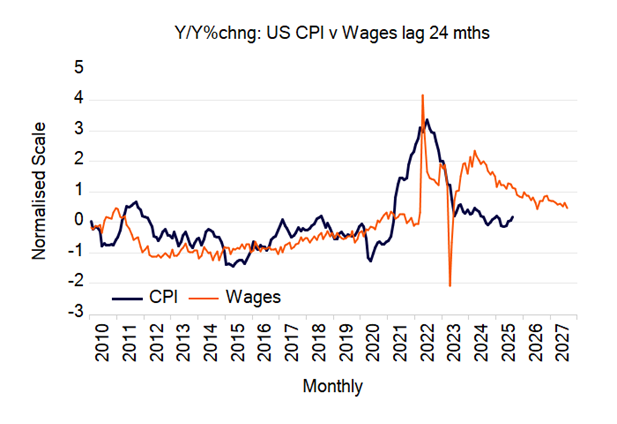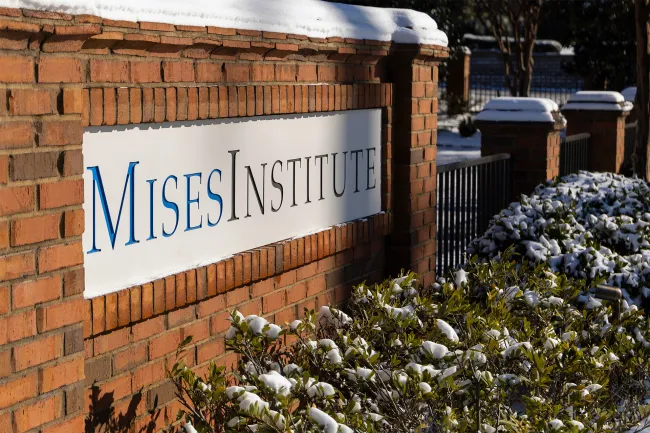For most economists and commentators, a strong labor market is the key driver of economic growth. The reduction in the number of unemployed people supposedly means that more individuals can afford to increase their spending on goods and services. As a result, according to such thinking, economic growth is likely to follow. This is based on the view that an increase in the demand and spending will trigger an increase in the supply.
In reality, it is not increasing employment, but production, saving, and capital investment are the keys for stable economic growth. According to Mises,
The sine qua non of any lengthening of the process of production adopted is saving, i.e., an excess of current production over current consumption. Saving is the first step on the way toward improvement of material well-being and toward every further progress on this way.
It is savings that fund the enhancement and the expansion of the capital structure. An enhanced and expanded structure of production permits an increase in the production of the final goods and services. According to Rothbard:
Crusoe without the axe is two hundred fifty hours away from his desired house; Crusoe with the axe is only two hundred hours away. If the logs of wood had been piled up ready-made on his arrival, he would be that much closer to his objective; and if the house were there to begin with, he would achieve his desire immediately, he would be further advanced toward his goal without the necessity of further restriction of consumption.
Now, if declining unemployment were the key driving factor of economic growth, then it would have made a lot of sense to eliminate unemployment as soon as possible by generating all sorts of employment programs. For instance, policymakers could have employed individuals in digging ditches or other various government-sponsored activities if the aim here is just to employ as many individuals as possible. However, since the government is not a wealth-generating entity, in order to fund the employment programs, it would have to divert wealth from the private wealth-generators to the individuals employed in government employment programs. As a rule, this wealth diversion is done either by various taxes and levies, by borrowing, or by inflation.
A policy of wealth diversion leads to the depletion of savings. By employing individuals in various non-wealth-generating activities this is just a net cost on the private, productive economy. This ultimately weakens the process of wealth-generation and undermines true economic growth.
Unhampered Labor Market and Unemployment
In an unhampered labor market, any individual that wants to work will be able to find a job at a going wage for his particular skills. Obviously if an individual demands a non-market-related wage and is not prepared to move to other locations, there is no guarantee that he will find a job. For instance, if a market wage for John the baker is $80,000 per annum, yet he insists on a salary of $500,000, he will be unemployed.
Over time, a free labor market ensures that every individual earns in accordance with the value of the product generated by the individual. Any deviation from the value of his contribution sets in motion corrective competitive forces. Ultimately, what matters for the well-being of individuals is not that they are employed as such, but their purchasing power in terms of the goods and services that they earn.
Individuals’ earning power, all other things being equal, is conditioned upon the production possible by their labor and available capital goods. The better the capital structure, the more output an individual can generate, productively and efficiently. With a higher productive output, all other things being equal, a worker can now command higher wages. Economically and historically, this is how worker wages have increased.
Monetary inflation by the central bank, supposedly aimed at helping workers to improve their living standards, achieves the exact opposite. Loose monetary policy undermines production, saving, and capital investment. This weakens the ability of wealth-generators to enhance and improve the structure of production. As a result, worker productivity comes under pressure and their ability to command higher wages weakens.
Do Wage Increases Cause an Increase in the Prices of Goods?
Some economists are of the view that the momentum of the consumer price index (CPI) is driven by the momentum of individuals’ wages. Thus, the higher the yearly growth rate of wages, the higher the yearly growth rate of the CPI will be. This conclusion is ascertained from the correlation between the yearly growth rate in the CPI and the yearly growth rate in wages (see chart).

Statistical correlation can only describe and not explain. To explain, we have to establish the definition of what prices and wages are by sound theory. In a monetary economy, the price of a good and the price of labor is the amount of money paid per unit of a good and per hour of work. All other things being equal, an increase in money supply means that individuals can now spend more money on goods and labor services. This means an increase in the prices of goods and an increase in wages. Hence, it is expansive monetary policy that sets in motion increases in the momentum of the CPI and not increases in the momentum of wages.
Is Fixing Unemployment Cost Free?
Once an economy falls into a recession and the unemployment rate starts to rise, most commentators believe that it is the duty of the government and the central bank to step in to counter the rise of unemployment. Some hold that decreasing unemployment will be cost free given that the unemployed individuals are “idle.” According to Paul Krugman, on a CNBC interview (August 31, 2010),
If you put 100,000 Americans to work right now digging ditches, it is not as if you are taking those 100,000 workers away from other good things they might be doing. You are putting them to work when they would have been doing nothing.
However, how is the lowering of unemployment going to be funded? Who will pay for this? It seems that Krugman is of the view that funding can be easily generated by the central bank by means of monetary inflation.
People require final consumer goods and services, not money as such, which is just the medium of exchange. Money only helps to facilitate trade among producers—it does not generate any real stuff. According to Rothbard,
Money, per se, cannot be consumed and cannot be used directly as a producers’ good in the productive process. Money per se is therefore unproductive; it is dead stock and produces nothing.
Contrary to Krugman, the artificial generation of employment, such as digging ditches, will not be cost free. Various individuals employed in such projects must be funded and this must come through government taxation of the productive, private sector (through taxation, borrowing, or printing), which adds a net cost. Hence, for the government to engage in various employment projects, it must divert resources from wealth-generators. This, however, will weaken the process of true wealth-generation and economic growth.
Conclusion
Reducing unemployment is not the key factor for economic growth. The heart of economic growth is production, saving, and capital investment. Savings are instrumental in the expansion and the enhancement of the production structure. With an expanded and enhanced production structure, stronger economic growth can be secured.
Contrary to some commentators, government policies aimed toward reducing unemployment are not cost free, rather they result in the diversion of resources from private production toward various government programs. In the process, this undermines the ability to grow the economy. Further, it is not wages that drive price inflation higher, but loose monetary policy of the Fed. Hence, what is required to arrest the increases in price inflation is for the Fed to arrest its loose monetary policy.


